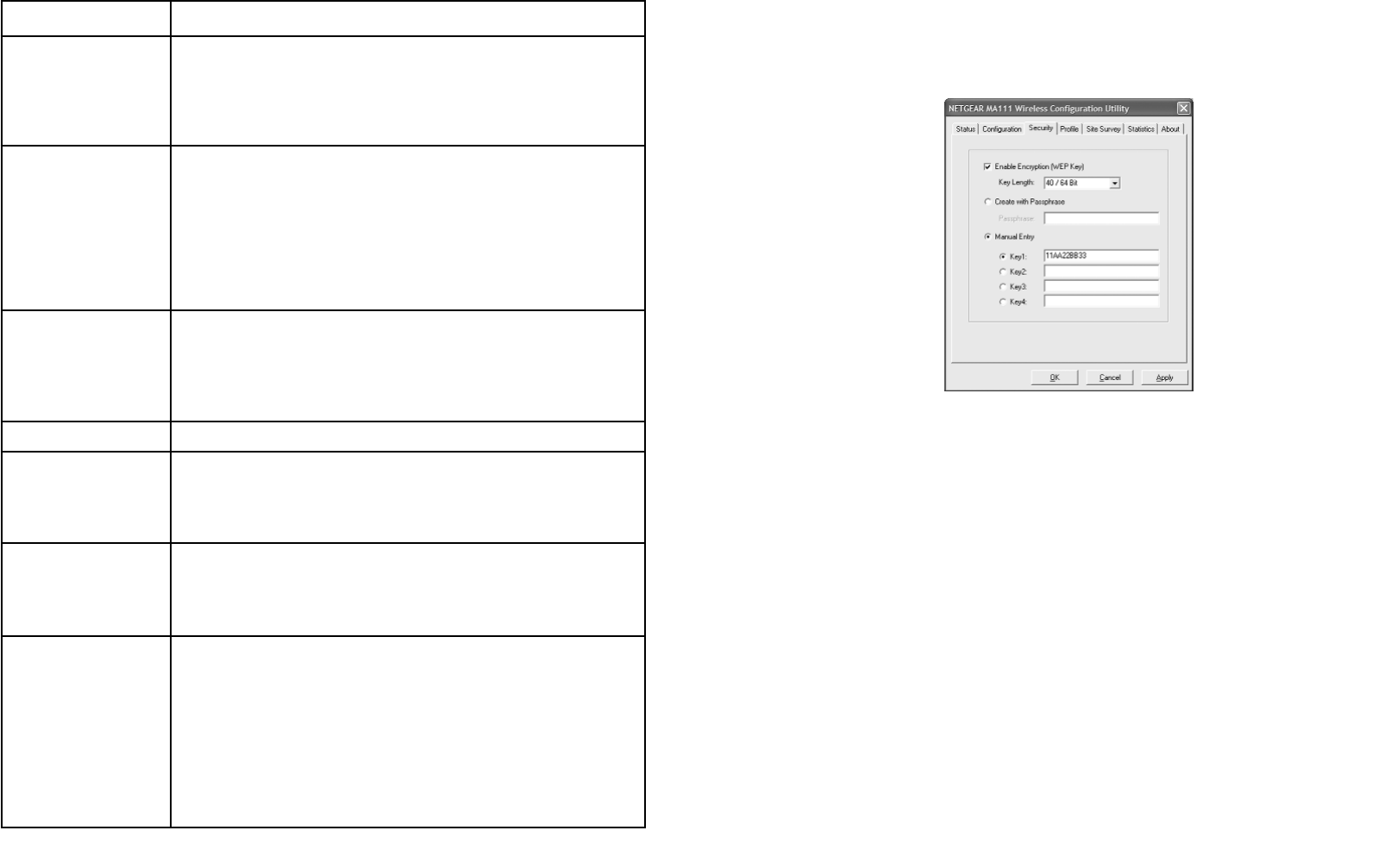
Security Section
To prevent unauthorized wireless stations from accessing data transmitted over the network, the
Security section of the Configuration Utility offers secure data encryption, known as WEP, to
better protect your data transmissions.
To activate the WEP Encryption, make sure the Enable Encryption (WEP Key) box displays
a checkmark (as shown above).
WEP Encryption options will be displayed, as shown on the previous page. You may make
changes, as detailed here:
1. Select one of the two options: Create with Passphrase or Manual Entry. A Passphrase
makes you easier to enable WEP because it automatically generates the WEP hexadecimal
numbers for the key. If the wireless network Access Point uses a Passphrase, you can also
use that here. Otherwise, you will have to manually enter the hexadecimal numbers.
2.
Create with Passphrase option: pull down the Key Length options and select the 64-bit
or 128-bit, then type in your Passphrase.
3. Manual Entry option:
• Pull down the Key Length options and select the 64-bit or 128-bit, encryption method.
• In the Encryption Keys fields, specify the WEP keys:
For 64-bit encryption:
Hexadecimal: 10 hexadecimal digits in the range of “A-F”, “a-f” and “0-9”
(e.g. 11AA22BB33)
14
13
Fragmentation
Threshold
This is the packet length used for fragmentation. Packets larger than
the size programmed in this field will be fragmented. The
Fragmentation Threshold value must be larger than RTS Threshold
value. The default value for Fragmentation Threshold is 2432.
RTS/CTS Threshold
The packet size that the wireless node uses to determine if it should use
the CSMA/CD mechanism or the CSMA/CA mechanism for packet
transmission. With the CSMA/CD transmission mechanism, the
transmitting station sends out the actual packet as soon as it has waited
for the silence period. With the CSMA/CA transmission mechanism,
the transmitting station sends out a RTS packet to the receiving station,
waits for the receiving station to send back a CTS packet before
sending the actual packet data. The default value for RTS Threshold is
2432.actual packet data. The default value for RTS Threshold is 2432.
Channel
Specifies a channel only when using an Ad-hoc network mode.
Preamble Type
A long transmit preamble allows the receiver (MA111 Wireless USB
Adapter) to lock into the received bit patterns more easily. A short
transmit preamble provides better performance. Default: Auto (long
& short).
Transmit Rate
The Transmit Rate field allows to define the data transfer rate. The
default value if Fully Automatic. In this case, the best transfer rate is
negotiated between this wireless node and access point or another
wireless note that it is communicating with. Other option values for this
field are 1 Mbps, 2 Mbps, Auto 1 or 2 Mbps, 5.5 Mbps, and 11 Mbps.
Configuration
Description
Network mode
Configurable between 802.11 Ad-Hoc and Infrastructure modes. In
802.11 Ad-Hoc mode, the wireless nodes form their own local
network where the end nodes communicate peer-to-peer without an
Access Point. In Infrastructure mode, the wireless searches all
available wireless channels to associate with an Access Point.
Network Name (SSID)
Enter a 32-character (maximum) Service Set ID in this field; the
characters are case sensitive. When the wireless node is operating in
Ad-hoc mode, this field operates as the Basic Service Set ID (BSSID).
All wireless nodes in the same network should use the same BSSID.
When in Infrastructure mode, this field defines the Extended Service
Set ID (ESSID). The ESSID assigned to the wireless node is required
to match the Access Point ESSID in order for them to communicate.

















